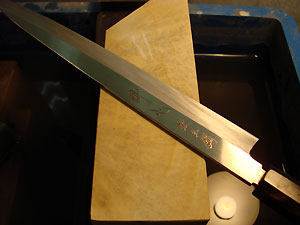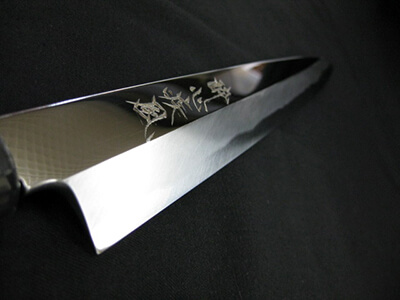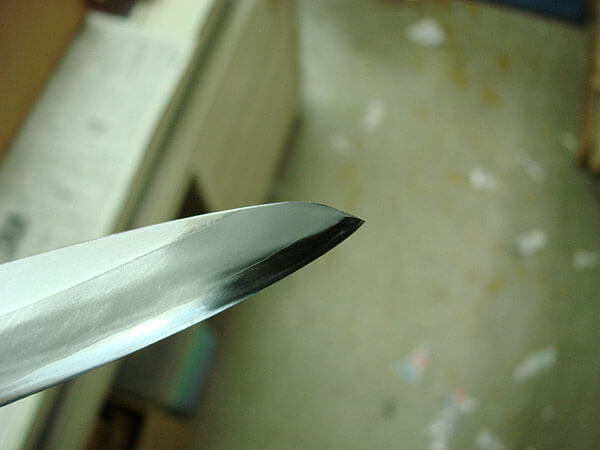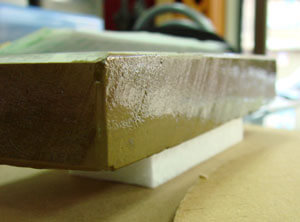the silver 3 steel knives

Today, I sharpened and repaired the silver 3 steel deba and yanagi knives that a customer from Hokkaido purchased a few years ago. They visit Sakai, their hometown, about twice a year, bringing the knives for sharpening and maintenance.
Each time they return, the knives have seen some heavy usage, and it’s always fun to imagine the adventures these blades have had. I add new techniques and approaches when I work on them, and it’s a great learning experience to see the condition of the knives upon their return.
This time, the knives were particularly worn, and the blades had thickened over time, so I decided to use a rotating water whetstone for an efficient sharpening. This helped establish a new shinogi line and adjust the cutting edge. While using the large whetstone, I didn’t notice much, but when I started hand-sharpening with a smaller stone, something caught my attention—’Is the steel getting a bit harder?’
Sometimes, blades that have been allowed to rest can tighten and harden slightly, and this phenomenon is quite possible. Carbon steel knives tend to rust and need replacement every 3 to 5 years due to corrosion, but silver 3 steel is robust!
The knives I sharpened today are in a condition that suggests they could last another 7 years or so. Even if they weren’t aged as meticulously from the time of purchase, the usage and sharpening process seem to simulate a similar aging effect. Therefore, the newly emerged edge after sharpening might be considered as matured and seasoned.
Recently, I’ve heard that modern steel undergoes heat treatments to prevent it from becoming too hard. Since this knife is probably from before such practices were prevalent, it might be slowly hardening over time…
I decided to compare it with a freshly sharpened silver 3 steel knife, and indeed, the feel of the whetstone is different, likely contributing to the changes. Because of this, the blade comes out quite sharp and biting during the sharpening process.
While checking the blade alignment, I had a small accident where a piece of my skin got nicked—a phenomenon that usually occurs when you’ve sharpened the knife exceedingly sharp, particularly in the case of carbon steel. The silver 3 steel didn’t have that ‘sharp bite’ during sharpening, but it certainly did with the medium whetstone.
The feeling of hardness certainly translates into sharpness, or you could say it ‘cuts well.’ Because of this perception of increased hardness, I slightly restrained the extension of the blade and added a light thread-like finish to the yanagi knife. Looking forward to the next homecoming with these knives.
No matter the knife, it’s often said that a well-used, slightly diminished knife tends to cut better. It’s not only about the personal sharpening style or how it fits in your hand, but also about the steel being in a tight and optimal condition, perhaps having subtly changed over time.
hibishugyo
- 2012-06-18





